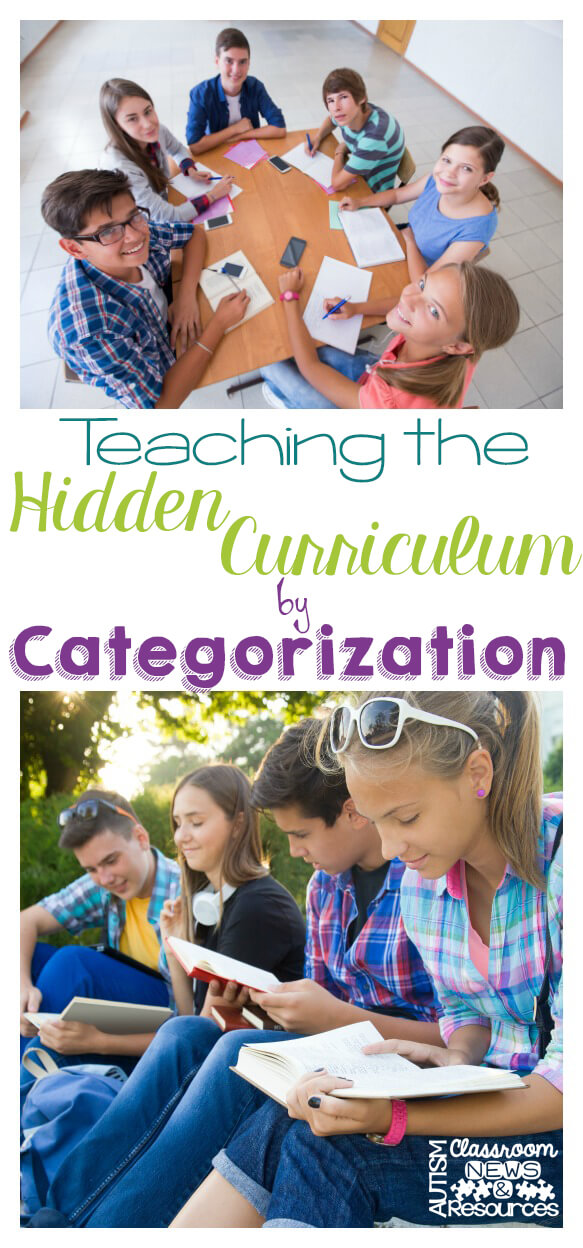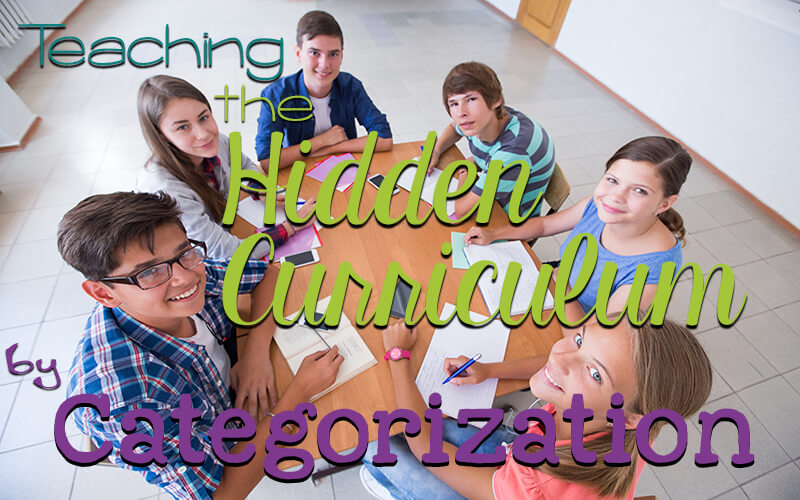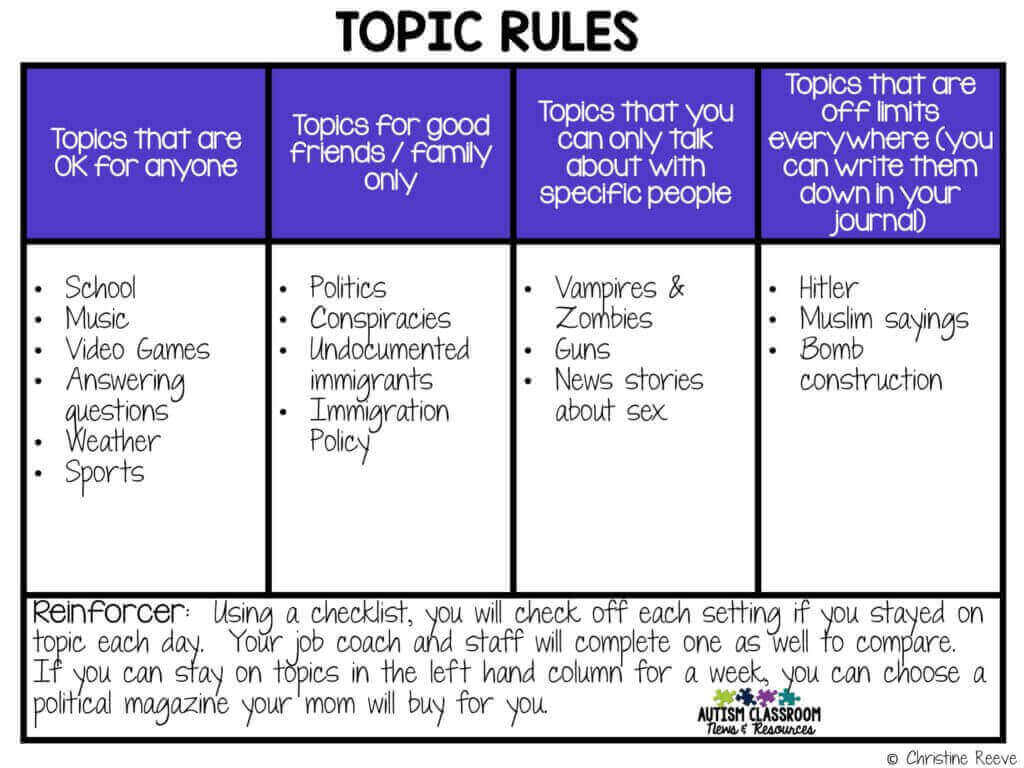Sharing is caring!
 I’ve been talking about the hidden curriculum (at least I was before I got distracted) and by now I’ve talked about how important it is in so many areas to explicitly teach the hidden curriculum. I’ve talked about how we can teach each item one-by-one, but this may not be the most efficient method for instruction. It means you have to anticipate every item and teach it. It also makes it difficult to teach those rules that are changeable depending on the situation and circumstance. So today I want to share a way of teaching students to classify events or rules to help them understand and continue to learn on their own.
I’ve been talking about the hidden curriculum (at least I was before I got distracted) and by now I’ve talked about how important it is in so many areas to explicitly teach the hidden curriculum. I’ve talked about how we can teach each item one-by-one, but this may not be the most efficient method for instruction. It means you have to anticipate every item and teach it. It also makes it difficult to teach those rules that are changeable depending on the situation and circumstance. So today I want to share a way of teaching students to classify events or rules to help them understand and continue to learn on their own.
This system comes from Temple Grandin, but I’ve used a similar strategy in different situations that I will share as well. Dr. Grandin talks about how she developed a system of classifying the social rules she ran into by four categories:
- Really Bad Things–things like murder, stealing
- Courtesy Rules–these are things that make society interact moe pleasantly and that are expected in many social situations, like saying please and thank you.
- Illegal but not Bad–these are events that are technically illegal but many people do them and you might bend them periodically–like driving slightly over the speed limit.
- Sins of the System–these were things that Dr. Grandin talks about as things that might not be that bad in other cultures but that would have significant consequences in the U.S. They may or may not be illegal. To me these are things that a student may not think are a big deal and can justify, but you have to just teach a rule not to do it because the consequences can be so serious. A good example might be threatening to bring a gun to school. Even if he is just kidding around, this is something that will have serious consequences in a school and could get him suspended if not worse. Similarly, talking about blowing things up when standing in the security line at the airport. It’s not illegal but the consequences can be significant.
Read more about Dr. Grandin’s explanation of this system here.
Another way I’ve used categorization for students to understand the hidden social rules are to help a student know what he can and can’t say in situations. It’s hard because there aren’t always hard and fast rules that apply everywhere he goes so it helps to have different levels or situational cues to know where certain topics might be OK. I first created this organizer for a student who liked to talk about ghoulish stories that were incredibly violent that he would write and read. He also talked frequently about a variety of political conspiracies and made statements at school about Muslims, Jews, and bomb making. Clearly these topics were going to be problematic in a variety of settings. I created this organizer with him and some of the categories took some convincing. For some I couldn’t convince him that they needed to be off limits. We had a number of discussions about freedom of speech vs. taking into account the perspective and concerns of those around him. Then we negotiated a reinforcer. Talking about these topics were so important to him that he needed an extra incentive to practice refraining from talking about them. However, over time it was successful in making the rules clearer to him and helping him stay on more appropriate topics with a variety of people.
I’ve used this system with other students since this one and it has helped to make the social guidelines more explicit for them. It also can help to teach them a way to think about information they gather from their environment.
I’ll be back next time with another way we can teach the hidden curriculum by teaching students how to gather information and attend to relevant information on their own.
Until next time,










